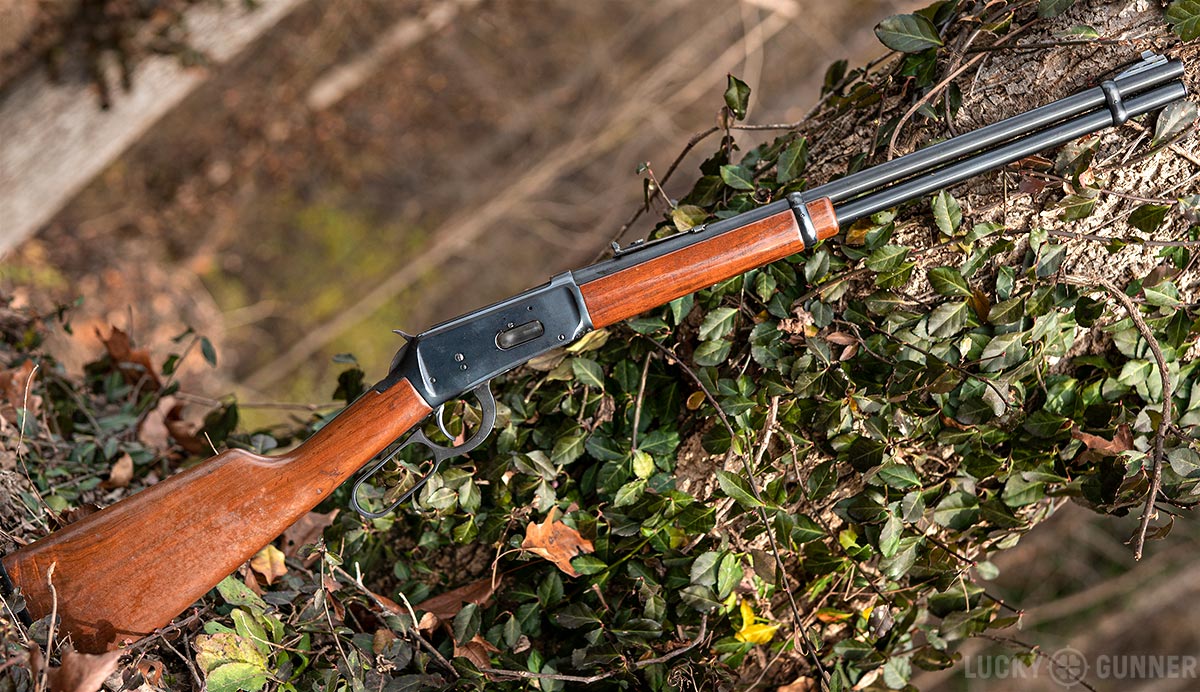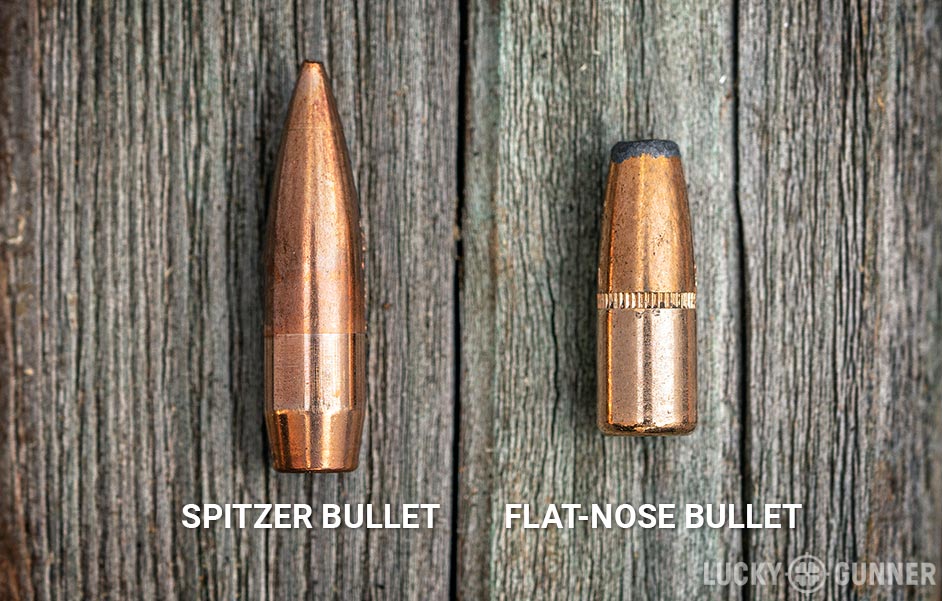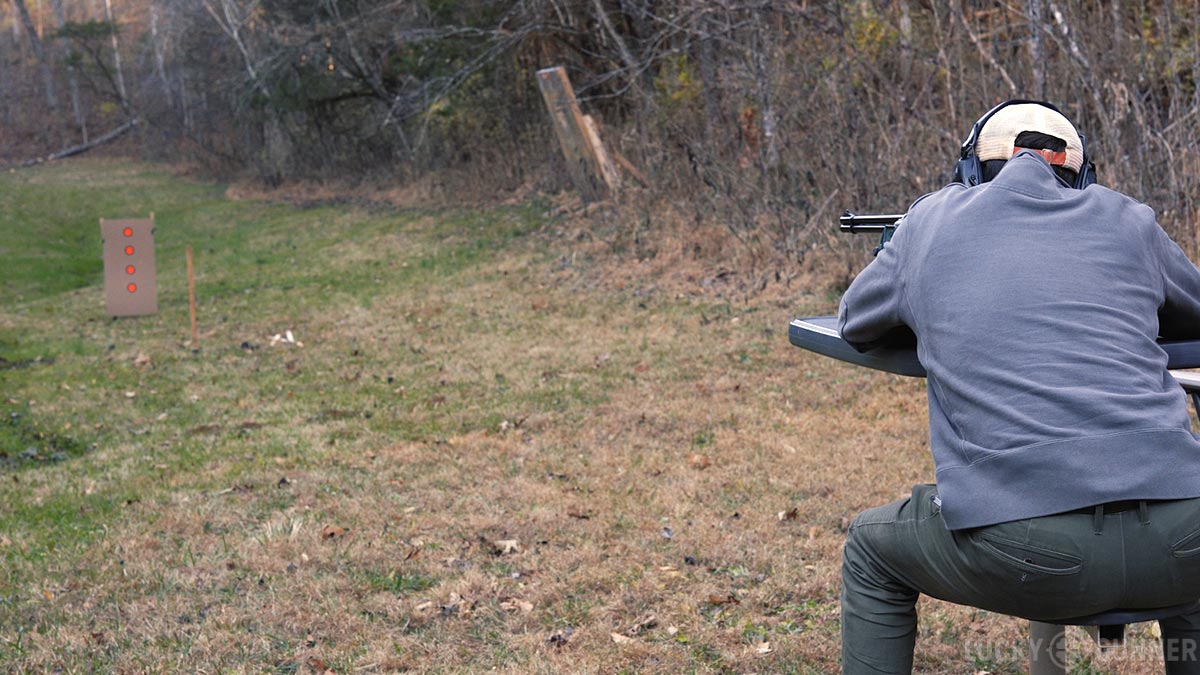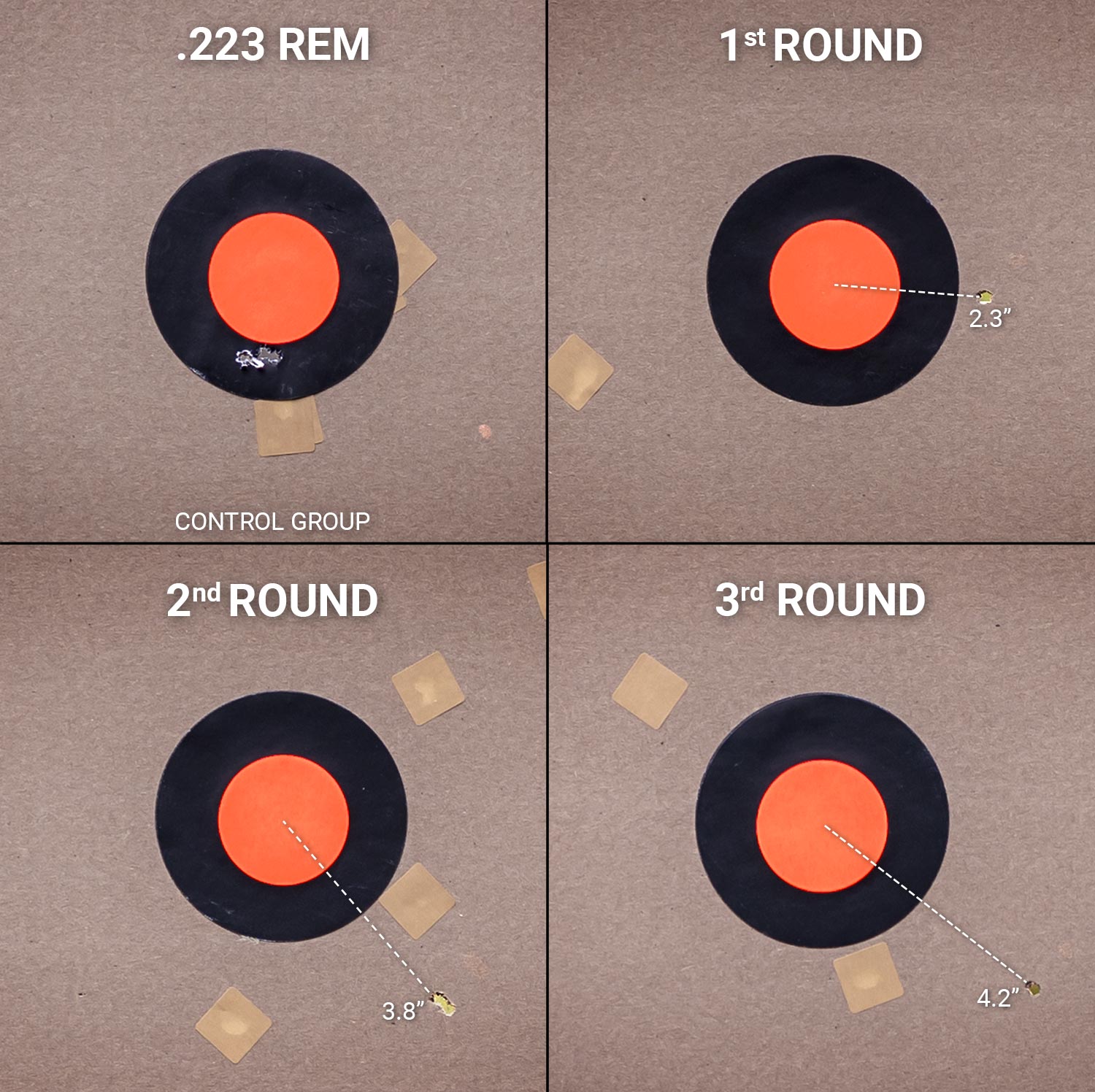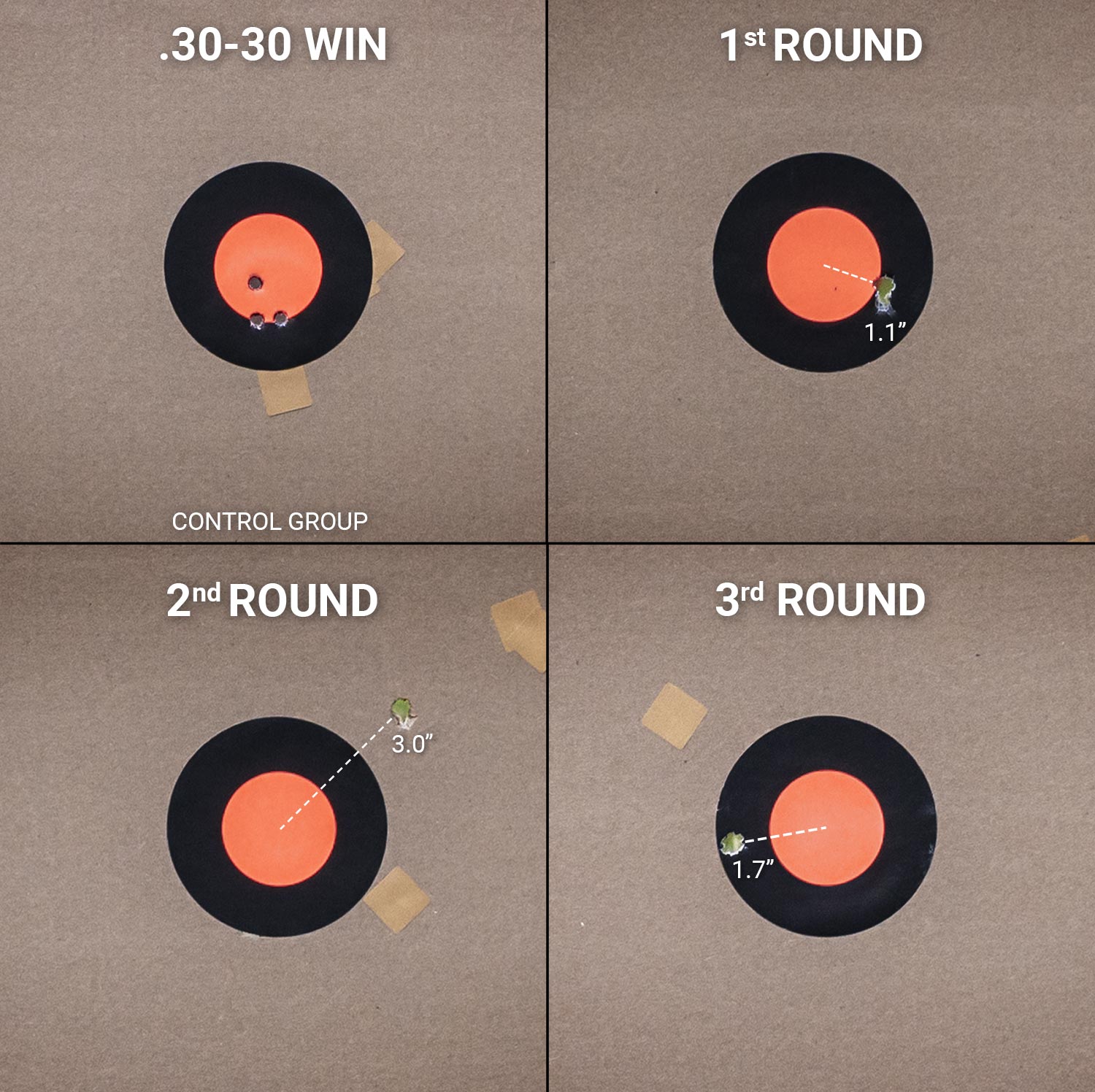Is a brush gun just a rifle that handles well in thick brush, or is it also better at shooting through brush? And why are brush guns so often associated with lever action rifles? Those are the questions we’re tackling today as we continue our series on lever action rifles.
Hey everybody, I am Chris Baker from LuckyGunner.com. A few days ago, my buddy Chuck Haggard posted some pictures from a hunting trip. He took a nice doe with his AR-15 and some .223 Speer Gold Dot. When he fired, he was sure it was a solid heart/lung shot, but it turned out the bullet went high and it was actually a spine shot. It dropped the deer, but that’s not really ideal shot placement.
Chuck is a great shooter and an experienced hunter. (He’s also an excellent personal defense instructor, by the way. You can look him up at Agile Tactical.) Chuck’s taken seven other deer with this gun and ammo combo. So it seems pretty unlikely that he just missed his intended aiming point by that much. Upon further investigation, it turns out the bullet clipped this little dried out sunflower stalk on its way to the deer and that’s what knocked it off target.
He posted this as a good reminder that we should all be careful that we have a clear shot when we’re hunting. Now, I don’t do a whole lot of hunting myself. I’m not in any position to offer much advice about that topic. But this story touches on a topic I have spent quite a bit of time trying to understand better over the past several years and that’s terminal ballistics — what happens to bullets after they hit things.
A lot of shooters would look at Chuck’s story and suggest that maybe next time, he should use a brush gun instead of an AR. What is a brush gun? The most basic definition that I think most people could agree on is that a brush gun is simply a rifle that is suitable for hunting game in heavily wooded areas with a lot of thick brush. What makes a rifle suitable for that task is the subject of some disagreement. Is it because they’re short and handy, or is it because they’re short and handy and also capable of shooting through brush?
You most often hear the term “brush gun” to refer to medium and heavy caliber lever action carbines. The typical examples have 16 to 22-inch barrels and are chambered for cartridges like .30-30 Winchester, .35 Remington, .444 Marlin, and .45-70 — sometimes even revolver cartridges like .44 Magnum. The shorter barrels handle better when you’re moving through thick brush, and those cartridges all have fairly limited effective range. Not always great in a big open field but perfect for hunting in the woods.
Through most of the 20th century, bolt action rifles almost always came with what we would consider today to be fairly long barrels. 24 to 26 inches was typical. If you wanted something that would handle better in the woods, lever actions with shorter barrels were more common. A 20-inch .30-30 was the obvious choice and they were pretty ubiquitous. That probably has a lot to do with why brush guns are so often associated with lever actions.
Now some people also claim that, in addition to the handling characteristics, a brush gun is better at actually shooting through brush. They sometimes use the term brush buster or brush cutter, or brush-bucking cartridges. Some of the favorites are heavier bullets moving at lower velocity and that’s where the .44s and .45s come in.
But bullet shape is also a major component of the brush busting theory. The bullets used in lever action cartridges usually have a flatter tip and an overall more cylindrical profile compared to the more typical pointed spitzer style bullets. Supposedly, this shape makes the bullets less susceptible to being knocked off course if they have to punch through something to reach the target.
Either way, this theory has plenty of skeptics. They will tell you that a brush gun is a gun that handles well in the brush, period. The brush buster or cutter is a complete myth. Even the smallest of intermediate barriers can drastically alter a bullet’s flight path, regardless of its shape, weight, or velocity.
So who’s right? I figured this would be easy enough for us to test, so I set up a little experiment. Now, we’ve got plenty of thick brush out at the range. It pretty much surrounds us on all sides out there. I could have just stuck a target on the other side of some brush and shot at it to see what would happen. The problem with that approach is that it can be tough to see for sure whether your bullet actually hit any of the brush, especially when you’re firing multiple shots.
So instead of actual brush, I decided to shoot through some pine furring strips. That makes the test more repeatable because I know every bullet has to punch through the same barrier. They’re ⅝” thick strips of wood, which is essentially the same as a small tree branch or a thick vine. And we happened to have a bunch of them laying around because we use furring strips in all our target stands.
This was a pretty quick experiment. I only tested three cartridges. But that was enough to give us what I think is a pretty telling result. I tested .30-30 and .45-70 for my brush guns. But I started out with .223 so we’d have something to compare the brush guns to.
I placed the target at 25 yards and the furring strip 25 feet in front of the target. That left enough of the target showing around the furring strip that I could get a reasonably accurate point of aim. To give you an idea of scale, my targets were four inch black circles with two-inch orange circles in the middle.
For the .223, I used a Bravo Company AR-15 with a 14.5-inch barrel and I just happened to have some of the Gold Dot ammo like Chuck used to take his doe. It’s a 62 grain soft tip bullet with a bonded copper jacket. Gold Dot is marketed as a personal protection load, but for all practical purposes, it’s the same bullet as the Federal Fusion hunting load.
Shooting from a bench rest, I started each test with a three-round group to confirm zero with no barrier in the way. This load was hitting just a little low at 25 yards. That group is about one inch below the center of the orange circle.
Next, I fired three rounds through the furring strip; each round at a separate target. The entry holes into the furring strip are pretty small with the .223, but you can see all three of them in there. Let’s check out what that did to the bullet’s flight path.
The first shot landed about 2.3 inches to the right. The second shot went almost four inches off course there at 5 o’clock. An oblong bullet hole or key-holing tells us the bullet was also most likely tumbling. That’s never a good sign. My last shot through the furring strip was also at around 5 o’clock, but this time it hit just over four inches from the center. It looks like that one was tumbling or yawing as well.
Okay, so that result isn’t much of a surprise. .223 is a light caliber and the bullets are moving really fast. It doesn’t take much to disrupt their trajectory.
Now let’s take a look at our first brush gun. This is a Winchester Model 94 with a 20-inch barrel. For the ammo, I used 170-grain Winchester Power Point. This is a basic soft point lead bullet with a copper jacket like hunters have been using for many decades.
My control group wasn’t as tight as the one I shot with the AR. The buckhorn sights are not ideal for shooting tiny groups, but I kept all the shots in the orange circle.
Then I did three rounds through the furring strip. The first round didn’t actually send the bullet too far off target. It’s just a little over an inch from the center of the circle. But again, we can see some signs of yawing or tumbling. The second round landed there at two o’clock, three inches off target. That one looks like it was also destabilized. The third shot was 1.7 inches off target leaving an irregular ragged hole that, once again, indicates the bullet had destabilized after hitting the wood.
On average, the deflection of the .30-30 was not quite as bad as we saw with the .223, but it could still be a major problem on a live target. The yawing and tumbling is also a serious issue. There are a few bullets out there, mostly intended for military use, that are actually designed to tumble once they hit the target in order to create a more effective wound channel. But that’s different than what we’re seeing here. We never want the bullet to destabilize before it hits the target. In addition to the deflection problem, a tumbling bullet will lose velocity very quickly and when it does hit the target, it won’t penetrate as well.
Okay, now let’s try the big one. If I had to bet on any bullet to confirm the brush buster myth, I’d probably go with .45-70. The test gun I used is a Henry All-Weather with a 18.5-inch barrel. The ammo is 300-grain Federal Power-Shok. This is a flat tip jacketed bullet with a soft lead point that’s got a very slight hollowed-out cavity.
I was hitting a little low with my control group, but it’s a good enough zero to determine whether the furring strips cause a significant difference. Those three average just under 1.5 inches from the center of the orange circle.
My first round with the barrier just kind of clipped the side of the furring strip. If anything, that made the deflection even worse. That round ended up 4.2 inches from the aiming point with some clear yawing. The second round was a more solid hit on the wood, and landed about 3.2 inches low. The last round was 2.4 inches low. And, of course, both of those bullet holes indicate some destabilization as well.
This was a pretty small-scale experiment. More of a demonstration, really. I don’t want to imply that this test, by itself, conclusively disproves the brush gun myth. But it’s not looking too good so far. At the very least, it’s safe to conclude that using a .30-30 or .45-70 in brush is no guarantee that you won’t get some bullet deflection and destabilization.
A more extensive test might show us whether certain combinations of bullet shape, weight, and velocity are less susceptible to deflection than others. And that’s actually been done before, multiple times. I’ve found references to several of these tests, especially in the 1960s through about the 1980s. They were published in gun magazines and deer hunting books. The military has also done some bullet deflection studies. From the bits and pieces I’ve been able to track down, all these tests had slightly different conclusions, but they also used different test mediums and methods so it’s kind of tough to make even comparisons.
But if you look at those studies as a whole and then throw in all the numerous real world stories about bullet deflection from hunters, law enforcement, and military veterans, you’ll see a very clear trend. Any projectile launched from a firearm, including a shotgun slug or a .50 BMG, or whatever else you can imagine, can easily deviate from its original course if it comes into contact with any solid object before it reaches the intended target. Likewise, any projectile that hits something on its way to the target will most likely destabilize, which might produce an unpredictable terminal effect on the target.
To put it simply, if you shoot at a thing and the bullet hits some other thing first, no matter what that other thing is, it might cause the bullet to miss. And if the bullet does hit, it might do something weird to the target. If that target is an animal, the bullet might tear up a lot of flesh, but not penetrate deep enough to hit the vitals. It might make a sharp curve once it hits the tissue and fail to hit anything important that way. There are a number of things that can go wrong when the bullet doesn’t hit the target nose-first the way it’s designed to.
Like I said in the beginning, I am not much of a hunter. I am not trying to offer any specific hunting advice. All I can say is that based on this little experiment, along with everything else I’ve learned about terminal ballistics over the years, I would never take a shot at an animal knowing that there was a twig or a branch or something in the way.
I think, in a lot of those old experiments, they were not expecting to find a perfect brush-busting load. They knew that was a myth. They were looking for a bullet that might give them a little bit of an advantage in a marginal situation. If they happened to accidentally clip a branch that was a couple of inches in front of the animal, were there some loads that were less likely to totally ruin that shot than others? That is much different than having the expectation that as long as you use a specific gun or cartridge, brush is no longer an issue you have to worry about.
The parallel to this in the self-defense and tactical world is “barrier blind” ammo. If you take that literally, there’s really no such thing. All bullets behave differently when you shoot them through barriers — especially hard barriers like car bodies and windshield glass. A good barrier blind load is just one that is a little less likely to be a complete disaster and fly into pieces if you absolutely have to shoot through something to hit a bad guy.
Of course, in that context, you take a shot at the best available target to stop that person’s violent behavior as quickly as possible. Hunters have the option to not pull the trigger if they don’t have a clean shot. So maybe, rather than trying to find the perfect “brush buster” load, you’d be better off trying to improve your ability to make that judgement call. That might mean putting a low power optic on your brush gun or upgrading your optic to one with better quality glass. You might not ever take a shot beyond 100 yards with that gun and you can do that just fine with iron sights or a red dot. But a little magnification helps a ton with positive target identification, and that includes identifying any possible obstructions.
To bring this back around to our lever action rifle series, I think I have mentioned a couple of times in passing that I’m not a big fan of magnified optics on lever actions. I prefer a small red dot or ghost ring iron sights. That’s because I’m mostly shooting these things for fun. I prefer to keep them light and I think they handle better without a scope. But I don’t really need a scope for the kind of shooting I like doing with these guns. If I was actually hunting with them, something like a 1-4x or a 1-6x scope might make a lot of sense, just so I can be sure I have a clear shot.
That’s a topic I’ll be exploring a little deeper in the near future. One of the videos I have coming up in this series is all about sights and optics for lever actions. Be on the lookout for that in 2021. Until then, I hope you guys have a Merry Christmas and a fantastic New Year. I will see you soon.



